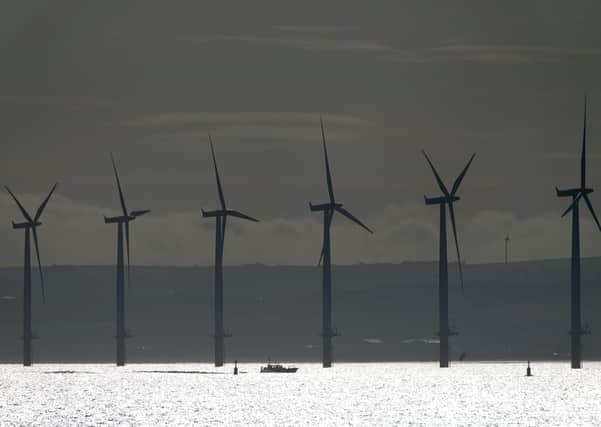PM’s plege could well benefit island’s green energy economy


PM Boris Johnson said the coronavirus crisis should be used as a catalyst to make the UK the world leader in offshore wind power generation, creating thousands of jobs in the process.
But with the plans focusing largely on offshore technology, climate charity Possible said more needs to be done to see the full benefits of the “hugely popular” onshore wind farms.
Advertisement
Hide AdAdvertisement
Hide AdFigures from the Department for Business, Energy and Industrial Strategy show 144,608 megawatts per hour (around 145 gigawatts) of renewable electricity were generated in Na h-Eileanan Siar in 2019.
This was 80 per cent more energy than the 80 GWh produced in 2014, the earliest year of data available.
The biggest producer of energy in Na h-Eileanan Siar last year was onshore wind farms, which generated 136,185 MWh – 94 per cent of the total. This was followed by hydroelectric energy, and solar power .
Renewable electricity generated around a third of the UK’s total energy last year (120,675 GWh) – almost double the amount it did in 2014.
Advertisement
Hide AdAdvertisement
Hide AdOffshore wind farms, which are turbines located at sea, and onshore wind farms, based on land, were each responsible for 27 per cent of the UK’s total, but the Government’s plan focuses largely on those in the water.
Downing Street said the £160 million investment programme will enable the sector to support up to 60,000 jobs by 2030, upping the target for offshore wind from 30 to 40 gigawatts.
Climate charity Possible said it is great to see the PM finally backing wind power, but much more needs to be done to see the full benefits of the “hugely popular” onshore wind.
The Government’s own polls show 77% of the public support onshore wind energy – but solar, offshore turbines and wave/ tidal power were more popular.
Advertisement
Hide AdAdvertisement
Hide AdDirector Alice Bell said: “It remains a scandal that a local community group in England will still be unable to put up a wind turbine of their own to power their village, because onshore wind turbines are still banned under planning rules.
“Onshore wind is generating massive amounts of electricity for British households.
“Like all renewables, it’s popular. Moreover, it’s the cheapest way to generate electricity we have.”
In March, the Government reversed a 2015 decision which had ended support for onshore wind farms and prevented them from competing with other technologies to secure contracts in low carbon power schemes.
Advertisement
Hide AdAdvertisement
Hide AdThe two Enercon 900kW E44 wind turbines at Criongrabhal near Clachan-na-Luib generated 6.129 MWh of electricity between commissioning on September 13, 2019, and September 8 this year.
That just beat the annual island homes consumption figure by five days. This remarkable feat is just the latest accomplishment for a project that has overcome significant challenges on its way to becoming a success story that is an inspiration to other rural and island community energy projects.